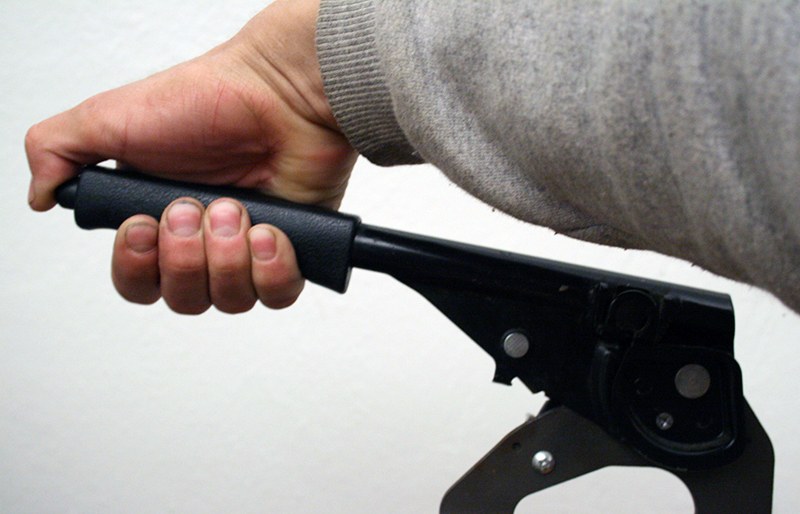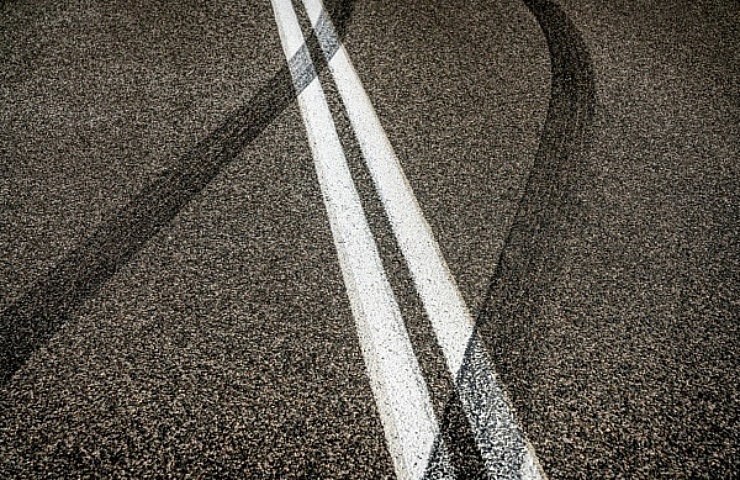Contents
If you’ve ever been driving on a slick road and slammed on the brakes, you may have experienced a moment when brakes lock up. What causes this problem, and how can it be fixed? Here are the answers you need.
What Does Brake Lock-Up Mean?
Brake lock-up occurs when the brake pads or shoes grip harder than the tire grabs to the road. This often happens when roads are slick or icy, but it can also occur on dry pavement due to mechanical failure.
Anti-lock braking systems (ABS) were introduced in the 1970s. Since this system became standard on every modern car, the instance of brakes locking up has dramatically decreased. This advanced system pumps the brakes when traction is lost or when the brakes are likely to lock up. But ABS is not enough to prevent brake lock entirely.
Shop now for ABS modulesYou’ll know the brakes have locked up when the vehicle veers to one side sharply or the rear fishtails. You may even lose control of the steering. You could also see smoke, smell something burning, or hear loud grinding.
Causes of Brake Lock-Up While Driving
If your brakes lock up without pushing the pedal, it could be for one of these reasons.
- Slippery road surfaces. The car is moving forward after the wheels stop spinning. Brake lock-up occurs more frequently in vehicles without ABS.
- Brake calipers are stuck. The caliper can get stuck as contaminants and debris build up in the brake system. If it’s binding, the brakes may remain engaged even if your foot isn’t on the pedal, leading to a dragging and locked-up feeling.
- Engaged parking brake. If you’ve left the parking brake on, it can feel as if the brakes are locked while driving. Driving with the parking brake on is the equivalent of going fast and slamming on the brakes.
Causes of Brake Lock-up While Braking
Something else could be wrong if you have your foot on the brake pedal when it locks up. Here are a few possibilities.
- Wrong fluid. The brake fluid provides hydraulic pressure to operate the brakes. If the wrong fluid is used, it’s old, or there’s too much in the master cylinder, the brakes can drag.
- Mechanical failure. Because the system relies on hydraulic pressure, any damaged part can lead to dragging brakes.
- Defective master cylinder. The master cylinder connects to the brake caliper or wheel cylinder and the car wheels. If the master cylinder isn’t operating, brake pressure won’t be distributed equally and lock-up could occur.
- Failed ABS module. If the ABS goes down due to a mechanical malfunction, you can see the ABS light on the dashboard. Additionally, the wheels could lock up because the ABS is no longer activated. Sometimes, the ABS fails simply because of a bad wheel sensor.
Avoiding Parking Brake Lock-Up

- Use the emergency brake often. When the emergency brake isn’t used, dirt and water can infiltrate the system. The result is corrosion that can affect how the parking brake works. If you apply a corroded parking brake, it can become stuck.
- Warm up the vehicle. The emergency brake can get stuck if it’s wet and cold outside. Thankfully, you can fix this problem simply by turning on the car for a short time.
- Pull gently. Don’t pull hard on the emergency brake lever. Pulling too hard can damage the system, causing the brakes to get stuck against the wall of your brake drums or rotors.
- Perform all necessary maintenance. By keeping the brake system maintained, you avoid costly repairs.
If the parking brake is stuck, you can do a few things.
- Rock the vehicle back and forth just enough to get the e-brake free.
- Get under the vehicle and manually pull on the cables. (We only recommend this option if you have mechanical experience and know what you are doing.)
- Try to set and release the emergency brake a few times to unlock the service brakes.
Have a professional mechanic take a look, if all of this fails. There could be a minor problem that you are overlooking.
How to Fix Locked-Up Brakes
If your brakes lock up, the most crucial thing is to remain calm. Follow these steps to get through the immediate danger.
- Turn on your car’s hazard lights.
- If you are driving at slower speeds, you may try to use the emergency brake to stop the vehicle on the side of the road.
- At higher speeds with ABS, press the brake pedal gently. Do not remove your foot from the brake pedal. If you feel it vibrating and pulsating, it’s doing its job. Gently try to steer your vehicle off of the road until it comes to a stop.
- At higher speeds without ABS, take your foot off of the brake pedal until the wheels regain traction. Once you regain control, push on the brakes gently and steer the vehicle down the road.
Once the incident has passed, you must figure out what went wrong and repair it. Otherwise, this problem could recur. Here are the steps to take.
- Check the brake fluid level and condition. If it needs to be changed or topped off, do so.
- If the brake fluid is low, look for signs of a leak and repair any problems.
- Inspect the brake calipers. If there’s rust or they are getting old, it might be time to replace them.
- Inspect the brake pads and discs. If the pads are worn, you may have a stiff pedal and signs of the brakes locking up. If you don’t change the worn brakes, the rotors will wear, leading to a higher repair bill.
- Inspect the braking system. You can use the information in your car’s service manual to check the other essential braking parts.





